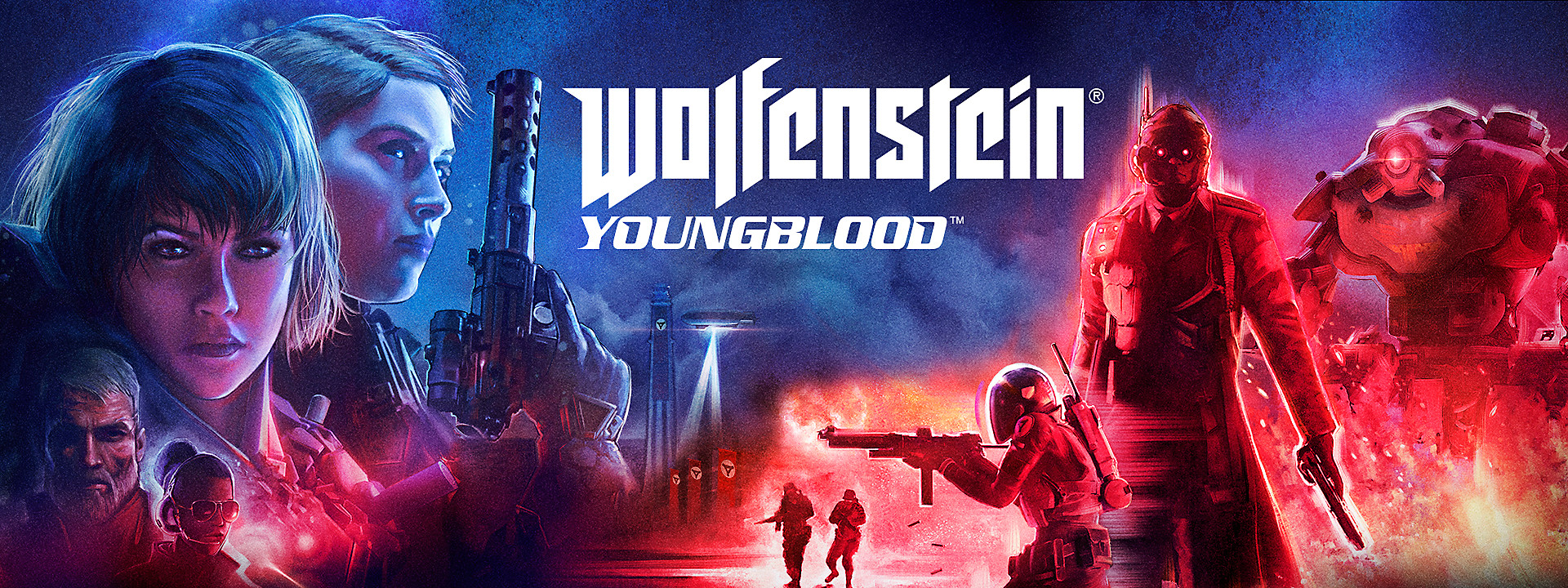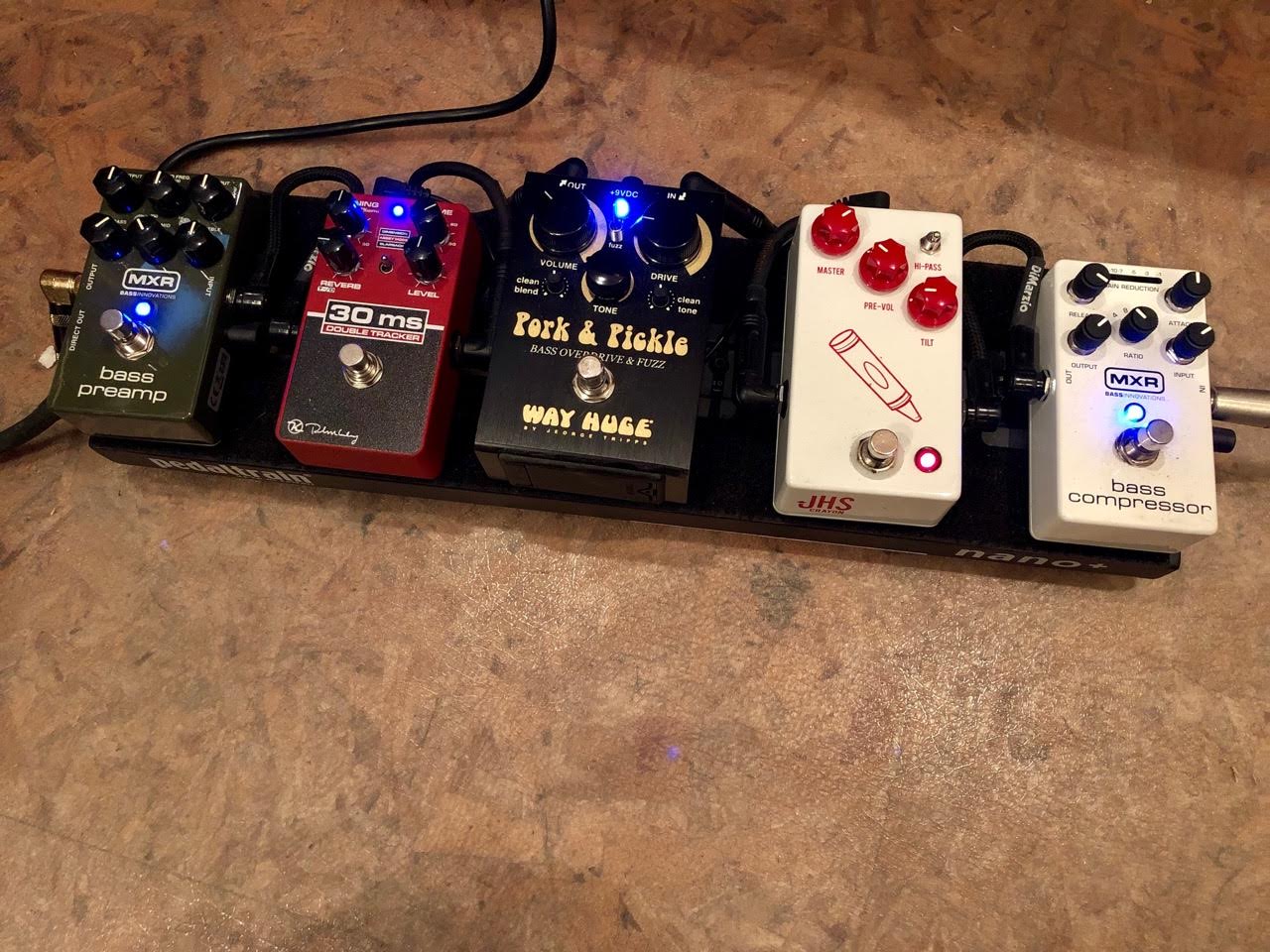
Scoring Bethesda Softworks' latest game, ‘Wolfenstein: Youngblood’, with Martin Stig Andersen
Following on from the recent release of Bethesda Softworks’ ‘Wolfenstein: Youngblood’, we caught up with composer Martin Stig Andersen to learn more about the scoring process for the latest game in the series, and his collaboration with fellow composer Tom Salta and Nine Inch Nails Guitarist, Robin Finck.
Hi Martin! It’s really great to catch up with you again after yet another busy year scoring video games. As ‘Wolfenstein: Youngblood’ is set two decades after the events of ‘Wolfenstein II: The New Colossus’, which you also scored, did you bring any aspects of the previous sound world into this project, or was your approach entirely fresh?
Almost all materials in this project were created from scratch. The few sounds that however did make the leap were used in story moments to reference events taking place in ‘The New Colossus’. To make these sounds fit aesthetically into the score they were heavily processed by means of synth filters and resampled using an old hardware sampler.
The game tells the story of an alternate history in which Germany won World War II. Jessica and Sophia Blazkowicz, the twin daughters of B.J. Blazkowicz, must travel to Paris to look for their missing father. At the same time, they have to help the French Resistance liberate the country from German occupation dating from World War II. Did you draw inspiration from the music of the 80s, or the territories the game crosses, to develop ideas for the score?
Even though it’s an alternative history timeline I did take inspiration from music of the 80s. I like to call it “out of this world 80s”. MachineGames was looking for something different from the modern interpretation of 80s music such as synthwave, and wanted instead to take inspiration from the 80s alternative scene, such as ethereal post-punk, and develop a style that felt unique to ‘Youngblood’.
I also took a lot of inspiration from working with sound equipment from the 80s, including the Boss Micro Rack Series, a Boss DR-55 drum machine, a Revox cassette deck and a DX7 keyboard. Katrine Amsler, who assisted me on the project, also build an instrument inspired by the project, a kind of electroacoustic instrument that could be played via attached springs and rubber bands. We fed the output into a Korg delay and a Boss pitch shifter/delay to get some interesting tones and rich Eventide-like overtones. At times it sounds surprisingly beefy and brutal!

That sounds great. Describe for us the process in developing music that is adaptable and reacts to the game play and the changes in environment – are you able to create stand-alone pieces from the various moments too?
Generally, the music is designed for interactive playback, reacting to different game states and parameters, such as whether the player is engaged in combat, distance to closest enemy, environmental setting etc. So, there isn’t really a stand-alone version unless arranged as such (for an OST for example). A five minute piece of music usually consists of around 100 segments, some of which are “transition” segments that allow the music to transition smoothly from say combat to safe. The shortness of the segments, sometimes down to one or two bars, accommodates for fairly quick transitions in the music. There’s always a trade-off between internal musical logic or syntax and the level of interactivity, and I need to keep that in mind when composing. You may not want to compose a long, elaborate combat theme, as combat may end anytime.

Could you tell us a bit more about your working relationship with Tom Salta – did you play with and adapt each other’s ideas, or are you quite individual in your working methods?
From the beginning, Tom and I had been assigned specific tasks corresponding to our individual strengths as composers. This is actually a nice thing about being several composers on a project. Like on ‘The New Colossus’, I was mainly dealing with portraying the Nazis but this time around I also had the chance to work on materials relating to the Resistance side. Tom and I had a couple of brainstorm sessions together, and a shared file folder where we could listen to each other’s work in progress. Playing the game, I feel our contributions complement each other beautifully!
How closely do you tend to work with the sound designers, and does their work influence and inform the decisions you make for the score?
Nick Raynor, the Audio Director at MachineGames, always tries to have some overlap between music and sound design. For example, on this project a key concept in the sound design was to have sound re-amp’ed, that is, to play back sounds through a guitar amplifier and record its speaker with a microphone. This technique was used by Cocteau Twins on drum machines back in the 80s in order to add punch and grit. So, I basically did the same thing, setting up a Fender Twin amp in my recording booth and making that available as an external hardware effect in my DAW. Similarly, I was using a Resonant Garden, an electroacoustic instrument by Folktek, on a couple of cues, so Nick asked if I could do a recording session for the sound designers to use for a specific sound effect. This kind of cross discipline work, going the extra mile, is the most fun part of any project, and only helps setting a game’s audio apart.

You collaborated with Robin Finck, the guitarist from Nine Inch Nails, what did you enjoy most about working together and what unique qualities did he bring to the score?
Deviating from the synth path, we were looking into having some eerie ethereal post-punk guitar elements in the music. I actually played that kind of stuff on guitar somewhere between late 80s and 90s, and although I haven’t touched a guitar since, I considered doing this myself. However, looking into guitars, amps and the endless shelves of guitar pedals I soon got perplexed, so I got in touch with Robin Finck, who I knew through Mick Gordon, and it appeared that he was a big fan – and specialist – of the dark music of the 80s. Luckily he agreed to get involved as co-composer on a couple of tracks.
When composing I usually start out by recording, so Robin would obviously do the first round. We decided on a ballpark tempo and key that would find the basis of a quasi-improvised recording session and allow me to subsequently mashup and combine his materials in different ways. I received more than an hour of brilliant stuff, so completely dark and eerie, a pure joy and inspiration to work with. After having done the first iteration on the arrangement I sent it back to Robin to work out some bass stuff. He basically looped the arrangement and played along on the bass guitar for a good chunk of the night. Once I had edited the bass recording into the arrangement Robin did a final round, replaying some of the bass lines and guitar rhythms, and also added some Korg MS-20 subs. Apart from playing in-game, the main track we composed together ended up in the game’s menu as well.

What a great experience to collaborate with him. What else have you been working on recently?
While working on ‘Youngblood’ I also composed the score for Remedy’s upcoming game ‘Control’, with Petri Alanko, the two games releasing with only one month in between. Currently I’m working on an indie game by Thekla, collaborating with Jonathan Blow. On the side, I started to look into orchestration again, something I left off some 20 years ago. Back then I considered orchestration as inseparable from composition, and I’m curious to see if my experiences with different working processes over the past two decades can inspire a fresh approach to orchestration.
Thank you so much, Martin! We also can’t wait for your next game project, Remedy Entertainment’s ‘Control’, which will be released on 27th August.
